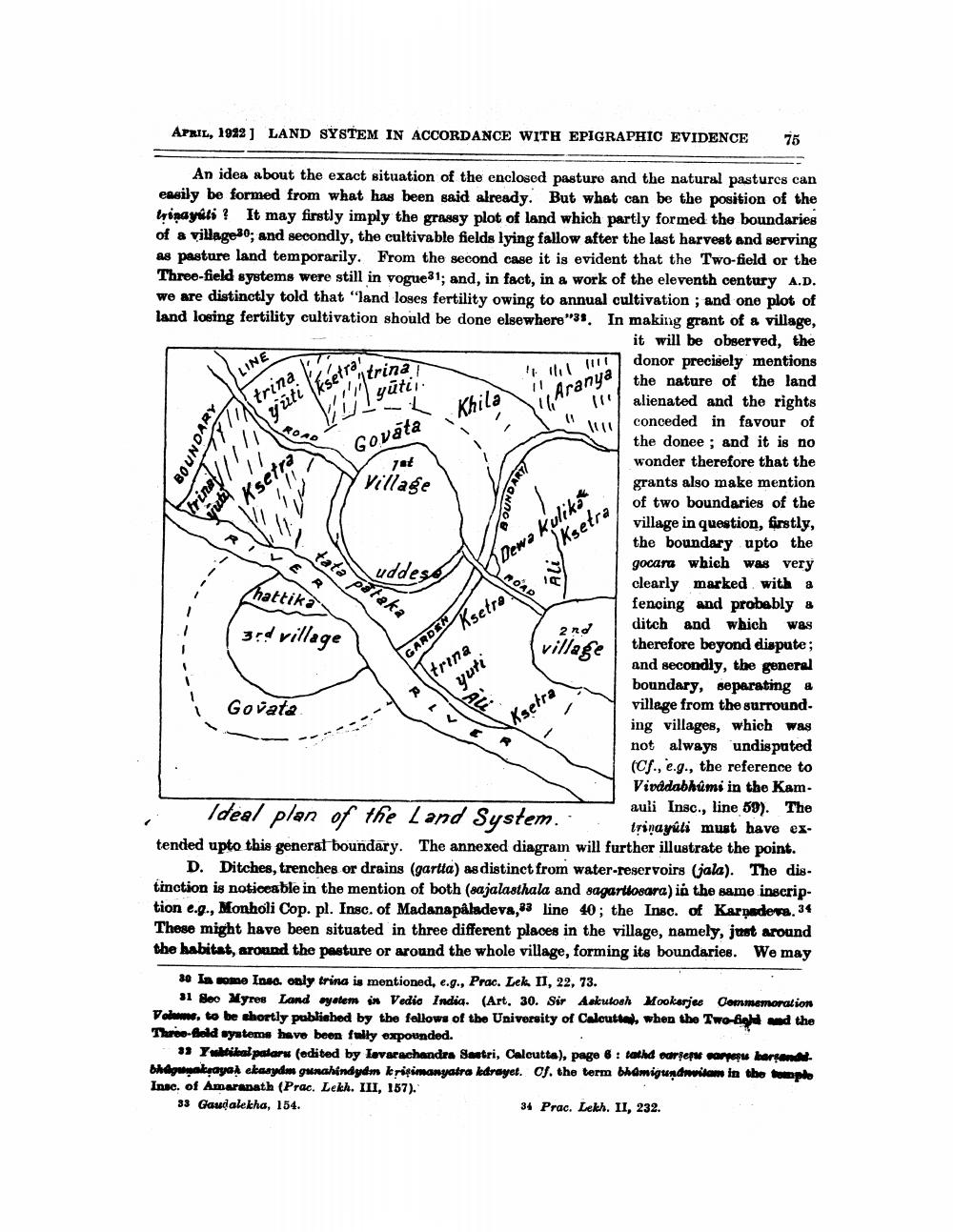________________
APRIL, 1912) LAND SYSTEM IN ACCORDANCE WITH EPIGRAPHIC EVIDENCE
75
LINE
tritt
1
yūtii
-
We Aranya
mitrinak
Khilo
BOUNDARY
11
Govåta
Vrina II
1/ 1 iksetra
RivER
W
Ksetra
An idea about the exact situation of the enclosed pasture and the natural pastures can easily be formed from what has been said already. But what can be the position of the trinayúti ? It may firstly imply the grassy plot of land which partly formed the boundaries of a village30; and secondly, the cultivable fields lying fallow after the last harvest and serving as pasture land temporarily. From the second case it is evident that the Two-field or the Three-field systems were still in vogue31; and, in fact, in a work of the eleventh century A.D. we are distinctly told that "land loses fertility owing to annual cultivation ; and one plot of land losing fertility cultivation should be done elsewhere"35. In making grant of & village,
it will be observed, the
111! donor precisely mentions a lotrani trina
the nature of the land alienated and the rights conceded in favour of the donee ; and it is no
wonder therefore that the Village
grants also make mention of two boundaries of the village in question, firstly, the boundary upto the
gocare which was very uddes
clearly marked with a fencing and probably &
ditch and which was village
therefore beyond dispute; and secondly, the general
boundary, separating a Govata
village from the surround. ing villages, which was not always undisputed (Cf., e.g., the reference to Vivddabhúmi in the Kam
auli Insc., line 59). The Ideal plan of the Land System.' trinayúli must have extended upto this general boundary. The annexed diagram will further illustrate the point.
D. Ditches, trenches or drains (gartta) as distinct from water-reservoirs (jala). The distinction is noticeable in the mention of both (sajalasthala and sagartiosara) in the same inscription e.g., Monholi Cop. pl. Insc. of Madanapaladeva, 83 line 40; the Insc. of Karnadera. 34 These might have been situated in three different places in the village, namely, just around the habitat, around the pasture or around the whole village, forming its boundaries. We may
tata pataka
Dewa kuliko
tika
( 3d village
2 ro
RDST Ksetra
Irina
R VE
yuti
30 la rome Inso. only trina is mentioned, e.g., Prac. Lek. II, 22, 73.
31 Sec Wyres Land systems in Vedic India. (Art. 30. Sir Askutosh Mookarjes Commemoration Volowe, to be shortly published by the follows of the University of Calcutta, when the two-fighe wed the Three-fold systems have been fully expounded.
33 Yobtikal palaru (edited by Lavarachandra Sastri, Calcutta), page 8: tahdoarer rarosu larganda bhd wakaya ekasydm gunahind ydm kripimanyatra kedraget. Of the term bhdmigundwitan in the toplo Insc. of Amaranath (Prac. Lekh. III, 167). 33 Gaudalekha, 154.
34 Prac. Lekh. II, 232.




